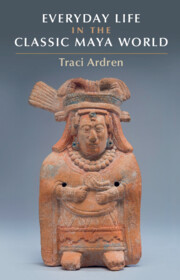6 - To the Coast
Published online by Cambridge University Press: 01 June 2023
Summary
While most discussions of Maya culture emphasize the central importance of maize agriculture to Maya identity and daily life, interregional trade in natural resources from a huge variety of micro-environments was equally central to the everyday habits of Maya people during the Classic period. The Yucatan peninsula makes up the majority of the landmass where Maya-speaking people lived in the past, and it is defined by an enormous coastline with hundreds of barrier islands and shallow bays. At the base of the peninsula there are river systems that flow from the southern Maya lowlands out to the Gulf of Mexico and the Caribbean Sea. Goods from the highlands and southern lowlands moved along these rivers, and then in turn up the coastline. Inland farmers, craftspeople, and their rulers relied on coastal trade for daily necessities, not just exotic jewelry and ritual items. Traders frequented coastal settlements, which were some of the most diverse and interesting places in the Classic period, where people from throughout the Maya world and beyond met and exchanged ideas as well as goods. These ports of trade emphasized economic exchange over dynastic lineage as a means to acquire influence and power, although some ports were controlled by large inland dynastic cities and certain commodities seem to have moved in and out of trade centers based on political alliances crafted or destroyed by the elite. The daily activities of those who lived near the sea were different from those of Maya people who lived at inland centers, and full- and part-time traders held positions of great influence in Maya society. In addition to economic activity, coastal settlements were often places of spiritual significance, even pilgrimage, as they embodied Maya conceptualizations of the sea as a boundary place between one world and another. Scenes from Classic mythology show supernatural creatures traveling to the underworld on a carved wooden canoe – and perhaps in part for its ability to provide not only subsistence but also rare materials, the sea was understood as a metaphor for the primordial place of origin, a realm where deities and potent spirits resided (Figure 6.1).
- Type
- Chapter
- Information
- Everyday Life in the Classic Maya World , pp. 124 - 146Publisher: Cambridge University PressPrint publication year: 2023



